The Future Technology demonstration tent at Nokia World was deceptively small this year. The inside felt large, though, and was bristling with new technology. Perhaps they picked up some upgrades from Gallifrey on their travels?
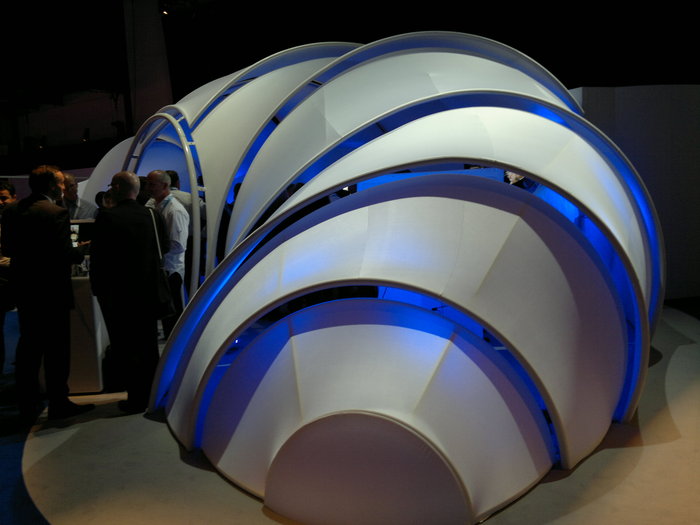
The Future Tech tent
The concept design
At Nokia World 2011, Steve and I spoke to Nokia’s Tapani Joiknen (Head of Design Technology Insights), who demonstrated the Kinetic device to us. It was clear that the demonstration was very design focused. The motivation behind the technology was to attempt to further differentiate from the common touchscreen candy bar devices that are almost ubiquitous these days.
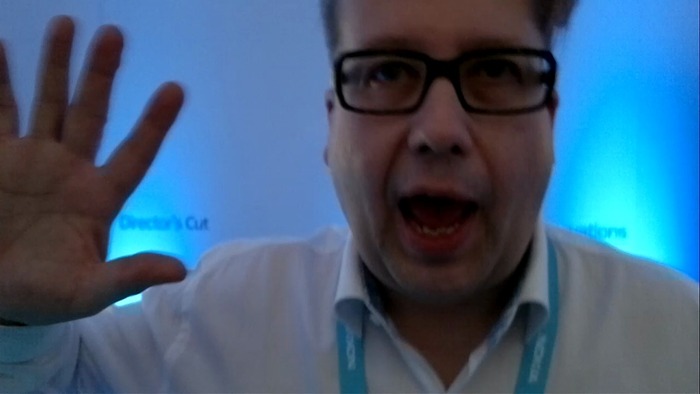
Tapani Joiknen
Tapani was keen to put this forward as the next big thing. Indeed, there are niche cases when capacitive screens are not an advantage - mainly in environments that require heavy gloves. Something that might be more common to Finnish designers than their Silicon Valley counterparts! In such cases, physically manipulating a device by twisting and bending, rather than using a bare finger tip, would be helpful. It would definitely save on buying expensive capacitive tipped gloves!
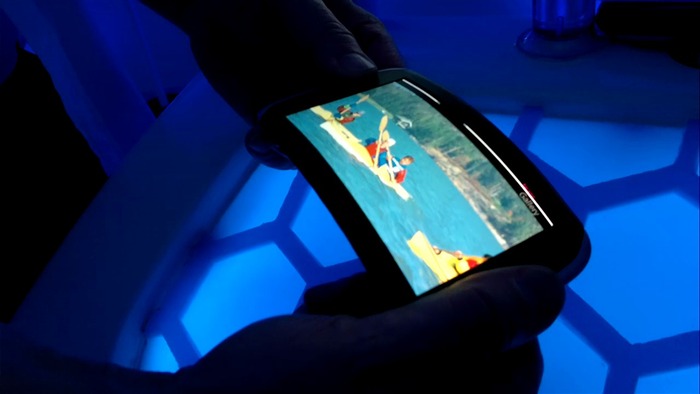
Bending to select an item
This type of bendable device requires a whole new set of gestures. The demonstration we saw allowed for two - bend and twist. Bending was typically used to select items - i.e. like a mouse click. However, we also saw that bi-directional bending was used for zooming in and out of an image. Therefore, alternative uses for the same gestures would obviously depend on context.
The twisting gesture was used to scroll through lists. The more extreme the twist, the faster the list would scroll. The device we saw showed kinetic scrolling, so as to make the scroll rate accelerate the longer the device was held with a twist.
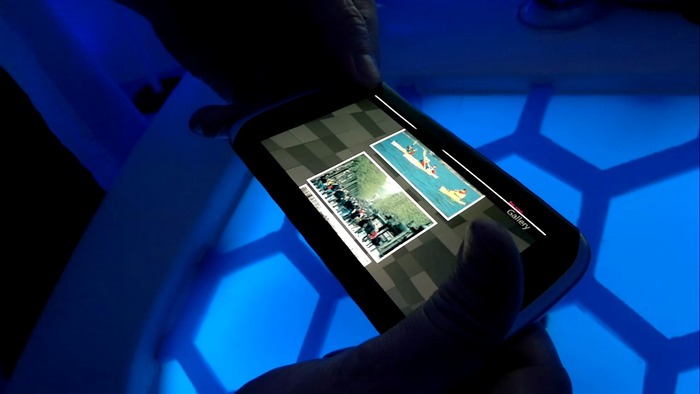
Twist to scroll
In both cases, there is a linear correlation between the amount of deformation and the level of input. Further to the twisting example, the more you twist, the greater your maximum scroll speed. This means that flexible devices can give a true analogue response. Most touchscreens can only approximate analogue control; such as on-screen joysticks or by reacting to the speed of gestures.
Another type of input planned for these devices, that was not implemented on the demonstration model, is pressure sensitivity. Tapani demonstrated with a non-active mock-up of a Kinetic phone where you could answer a call, just by squeezing it in your fist.
The more we saw the demonstration models bent back and forth, the question of reliability became more and more pertinent. Anyone who has been on the gadget scene for as long as we have, knows that moving parts often coincide with shorter lifespans.
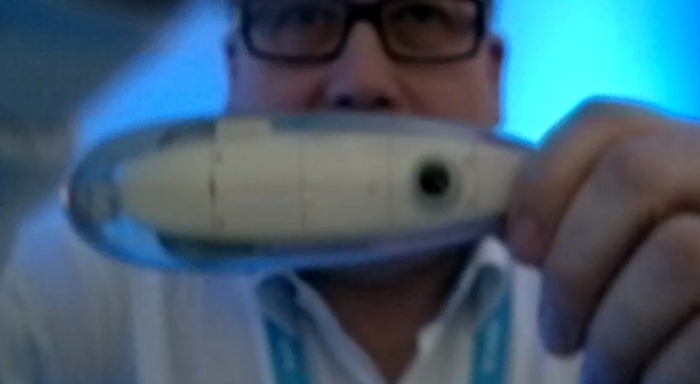
Interlocking component sections are meant to provide flexible electronics
When we put the question to Tapani, he replied by saying that the technology to do this already exists. Nokia’s idea is to build interlocking sections that would hinge together like a metal watch strap. While we were being shown the (non-functional) mock-up device, you could actually see the interlocking sections within its pliable exterior. We’ve yet to be convinced that this would stand up to real world punishment.
However, the technology wasn’t there enough to make the active demonstration into a self-contained device. There was a very prominent umbilical cable linking the handset to a computer beneath the device stand.
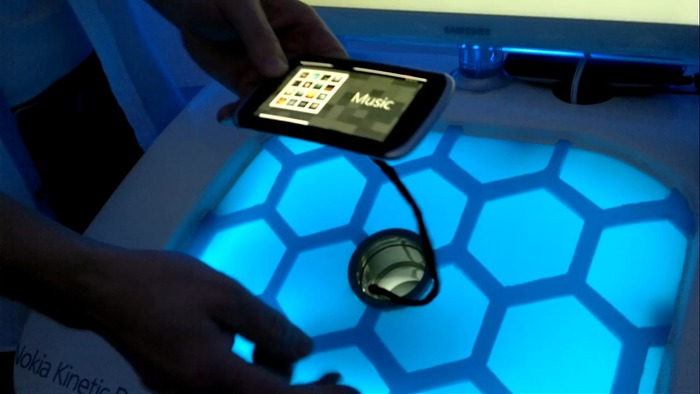
Spot the cable leading to the box of tricks
The technology that makes it possible
Among the other demonstrations in the Future Tech tent, we found a stand called “Nano Magic” which demonstrated the effect of stretching Carbon nanotubes. This technology is directly involved in making the Kinetic devices work. Any bend or twist of a device’s surface will contort an overlaid mesh of Carbon nanotubes. In turn, this changes their electrical resistance, which can be easily detected and read as an input. We spoke to Nokia’s Richard White to find out more.
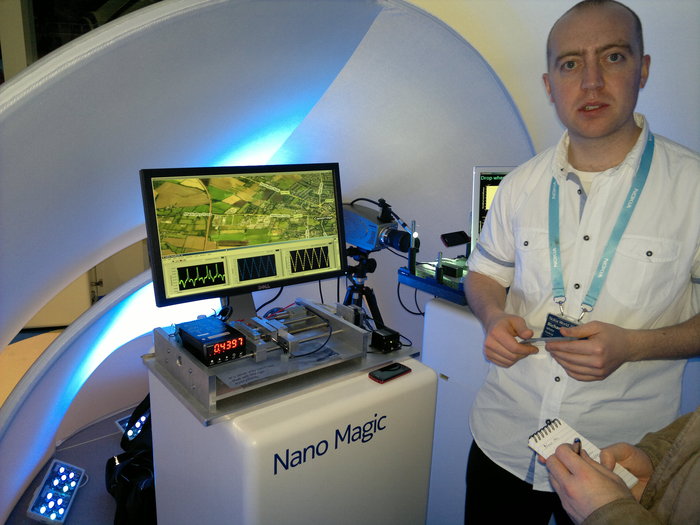
Richard White with the “Nano Magic” experiment
For those who don’t know, Carbon nanotubes are cylindrical molecules made from sheets of Graphene. In turn, Graphene is an allotrope of Carbon, where the atoms are bonded together in a repeating hexagonal planar pattern.
Richard explained that the demo was using single walled nanotubes. The thickness of each tube was of the order of tens of nanometers thick. To put that in context, that’s roughly one thousandth the thickness of a human hair! This means that the nanotube meshes can be added without being visible to the naked eye.
He went on to tell us that these nanotubes can be built into a three dimensional mesh. Furthermore, nanotubes are conductive, and the more you stretch them, the more their resistance increases. The change in resistance varies linearly with the tension placed on the nanotube.
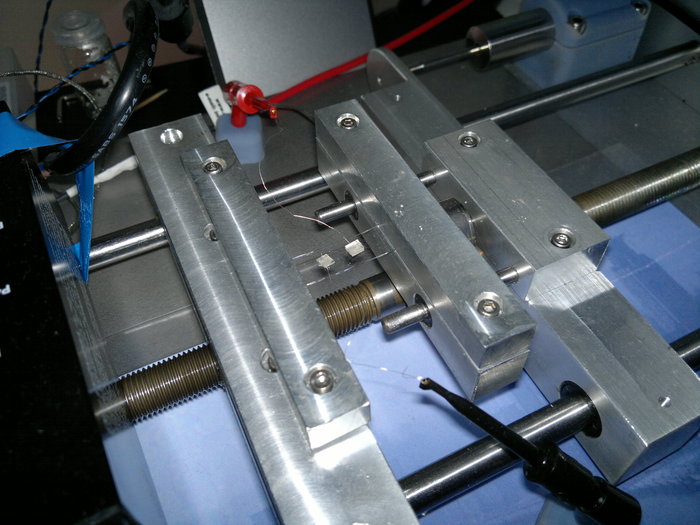
The apparatus to repeatedly stretch the Carbon nanotubes
The demonstration at Nokia World showed a nanotube structure being repeatedly stretched by 5% of its original length. Nanotubes are elastic, therefore removing the tension allowed them to return to their original length. The corresponding change in resistance was in turn used as an input to a computer program that was displaying a map. As the nanotube’s length changed, the zoom level changed accordingly.
A computer visualisation of a Carbon nanotube
Closing thoughts
While these technologies are clearly a long time away from the market place, it goes to show that the technology we know and love today isn’t the end of the road. As we’ve seen many times before though, great technology alone does not make a great product. When the time comes, let’s hope the design and marketing smarts are in place to support it.
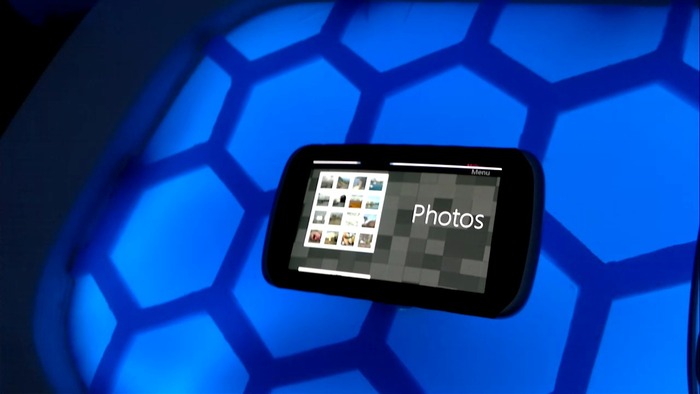
Is this the future for Nokia?
David Gilson (and photos from Steve Litchfield), 07 November 2011
